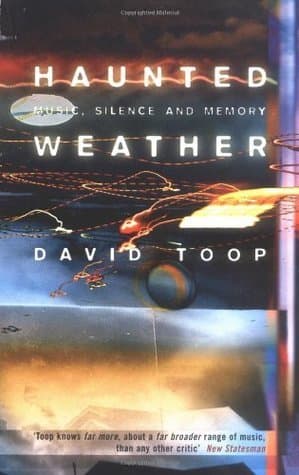
Book Review Summary: Haunted Weather: Music, Silence, and Memory
Introduction
Haunted Weather: Music, Silence, and Memory by David Toop is a thought-provoking exploration of the relationship between sound, silence, and memory. The book delves into the impact of new technology on contemporary music's sound and examines the significance of sounds from our environment. Toop, a highly regarded author, music critic, and musician, offers a relatable and involving perspective on the subject. With a rich collection of examples, interviews, and observations, this book serves as both a travel diary and a meditation on the connections between sound, silence, performers, and audiences.
About David Toop
David Toop is a musician, writer, and Professor of Audio Culture and Improvisation at the London College of Communication, University of the Arts London. He has released three solo albums, curated five compilation albums, and authored numerous books, including Rap Attack 3, Ocean of Sound, and Exotica. With his extensive knowledge and cultural awareness, Toop's thoughtful listening abilities and breadth of expertise make him a compelling author.
Analysis of Views
-
Engaging and Relatable: Readers find Haunted Weather engaging and relatable. Toop's delivery is captivating, making it easy to immerse oneself in the subject matter. The book's exploration of sound memories and their emotional impact resonates with readers.
-
Wide Range of Topics: The book covers a wide range of topics related to music, sound, and silence. From the emotional charge of sound memories to how places shape sound, Toop delves into various aspects of the subject matter. Readers appreciate the breadth of reference and the fascinating examples provided by the author.
-
In-Depth Analysis: Haunted Weather offers in-depth analysis of experimental music, improvisation, digital music, found sounds, and soundscapes. Toop discusses how these elements are interpreted by the mind and body in a sophisticated yet accessible manner. Readers appreciate the depth of Toop's analysis and his ability to convey complex ideas without making them overly convoluted.
-
Inspiring Insights: Many readers find the book inspiring due to Toop's eloquent and mindful discussions on experimental music. The insights provided by Toop offer fresh perspectives on the creative process and the boundaries of avant-garde sound. Readers appreciate his ability to delve into the diverse worlds of music from different countries and time periods.
-
Enjoyable Reading Experience: Some readers find Haunted Weather more enjoyable when read at a slower pace. They appreciate the opportunity to pause and research the compositions or performers mentioned in the book. The inclusion of links to digital platforms such as YouTube and Spotify enhances the reading experience by allowing readers to hear the discussed works directly.
Reasons for Recommendation
-
Comprehensive Coverage: Haunted Weather covers a wide range of topics related to music and sound, making it a comprehensive resource for readers interested in exploring these subjects. The book offers in-depth analysis and provides insights that are both inspiring and thought-provoking.
-
Engaging Writing Style: David Toop's writing style is engaging and relatable, making it easy for readers to immerse themselves in the subject matter. His ability to convey complex ideas in an accessible manner makes the book enjoyable for both beginners and experienced music enthusiasts.
-
Fascinating Examples: The book is filled with fascinating examples of performances, compositions, interviews, observations, and memories related to sound and silence. These examples serve as a catalyst for further exploration and provide readers with a deeper understanding of the subject matter.
Reasons for Not Recommendation
-
Lack of Focus: Some readers find that Haunted Weather lacks focus at times. The book covers a wide range of topics related to experimental music and sound art, which may lead to an overwhelming amount of information for some readers. The lack of a clear central theme can make it challenging for some readers to follow along with the author's train of thought.
-
Repetitive Content: A few readers mention that certain sections of the book become repetitive due to an excessive focus on Japanese sound artists or specific concepts related to Japanese culture. While these sections provide interesting insights into Japanese sound art, they may become tedious for readers seeking a more diverse range of examples or perspectives.
Conclusion
Haunted Weather: Music, Silence, and Memory by David Toop is a thought-provoking exploration of the relationship between sound, silence, and memory. With its engaging writing style, comprehensive coverage of various topics related to music and sound, and fascinating examples from around the world, this book offers a compelling reading experience for music enthusiasts and those interested in experimental music. While some readers may find it lacking in focus or repetitive at times, overall, Haunted Weather serves as a valuable resource for those seeking a deeper understanding of the connections between sound, silence, performers, and audiences.